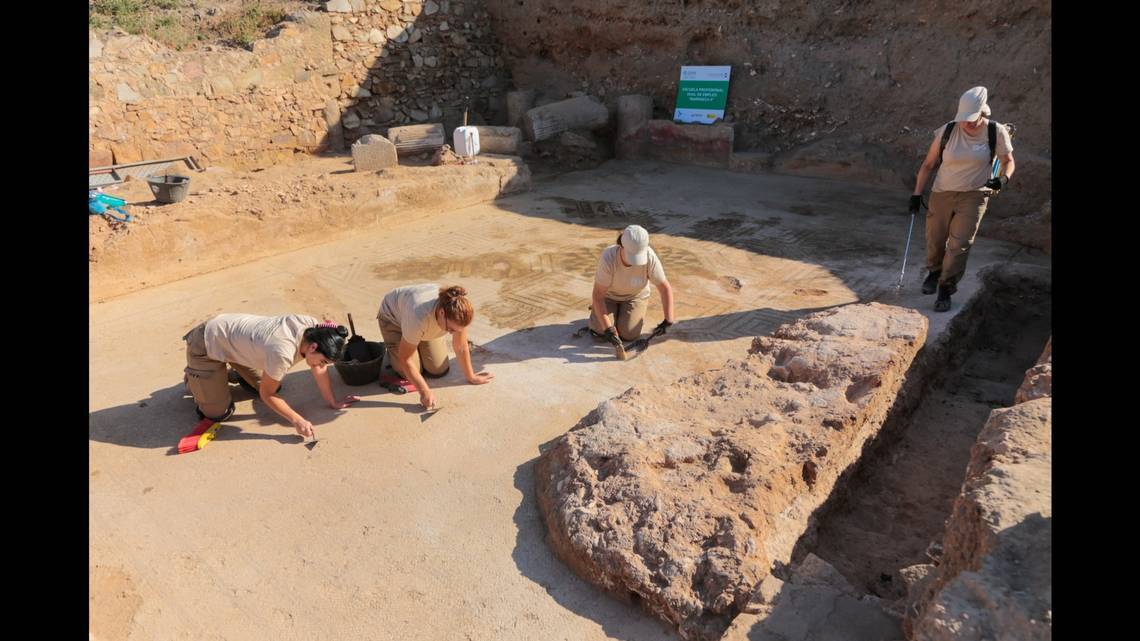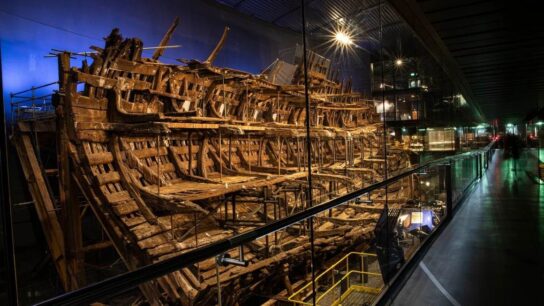Archaeologists Unearth Exquisite Roman Mosaic Featuring Medusa’s Enigmatic Visage in Spain’s Mérida
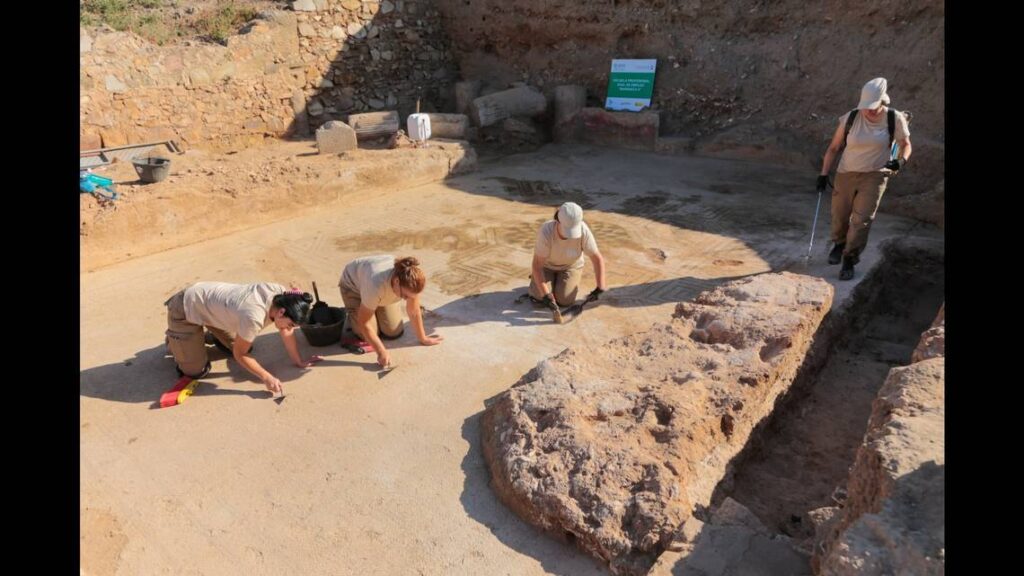
Archaeologists in Spain recently made an “excepcional” — which translates to exceptional— discovery: an ancient Roman mosaic floor that includes a depiction of Medusa’s head.
The intricate mosaic was unearthed during excavations at the La Huerta de Otero archaeological zone, the Mérida City Hall said in a July 26 news release. It was found in what was the main room of a Roman family’s sprawling home.
Experts said the colorful, well-preserved mosaic centers around Medusa’s head, which is surrounded by an octagonal medallion.
Four peacocks representing each of the four seasons are within hexagons in the medallion’s corners.
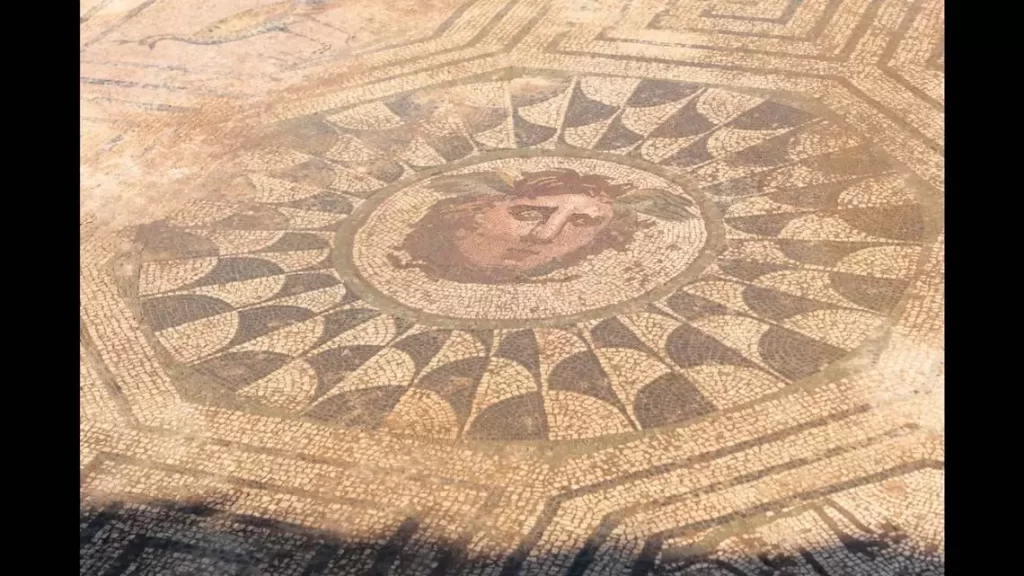
This image is framed by a large square full of floral and animal motifs, specifically birds and fish, city officials said.
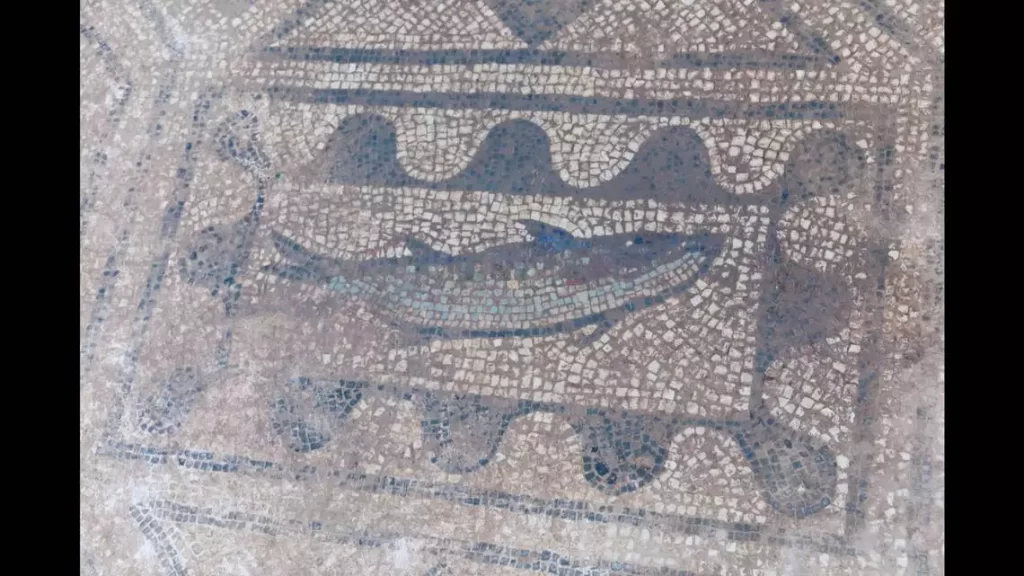
Medusa — who is the most famous monster or Gorgon in Greek mythology, according to Britannica — served as a protection for the home’s inhabitants, experts said.

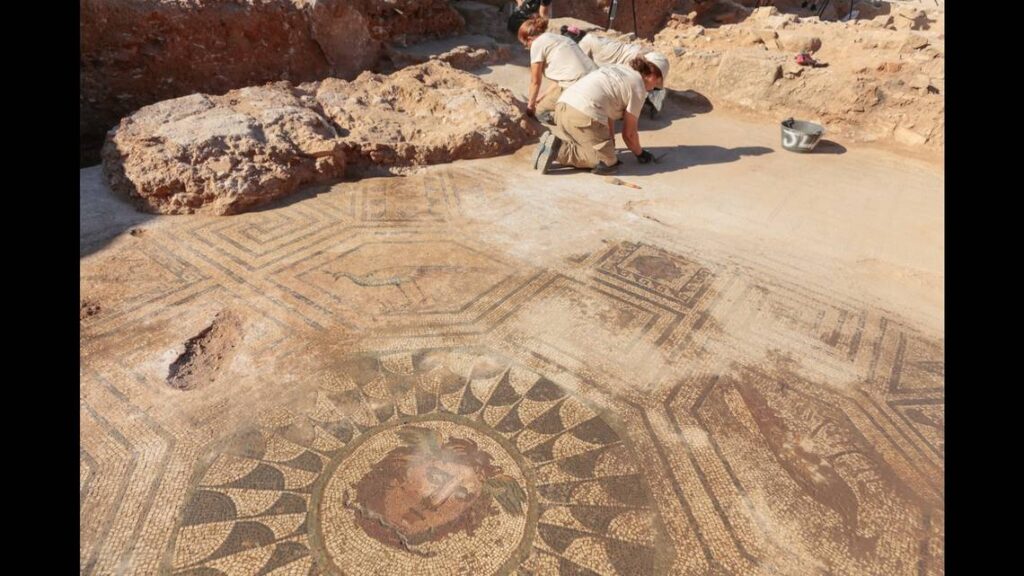
Students from the Barraeca II Professional School of the City Council began work at the site in September, officials said.
The mosaic was discovered in Mérida, which was formerly the Roman town of Augusta Emerita, according Britannica. Augusta Emerita was founded in 25 B.C., and it quickly became one of the most important and powerful towns on the Iberian peninsula during the Roman empire.
Mérida is about 210 miles southwest of Madrid.

